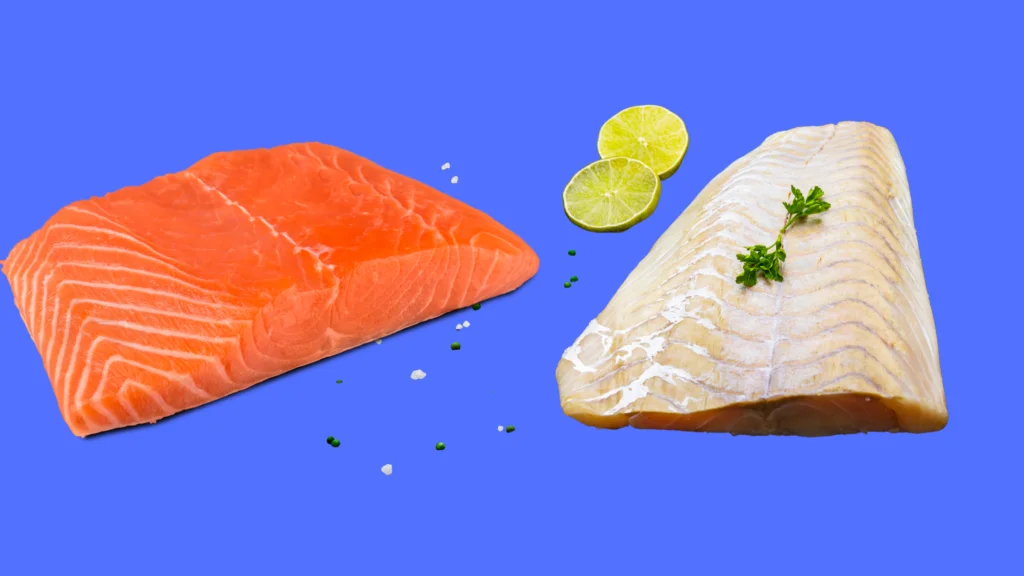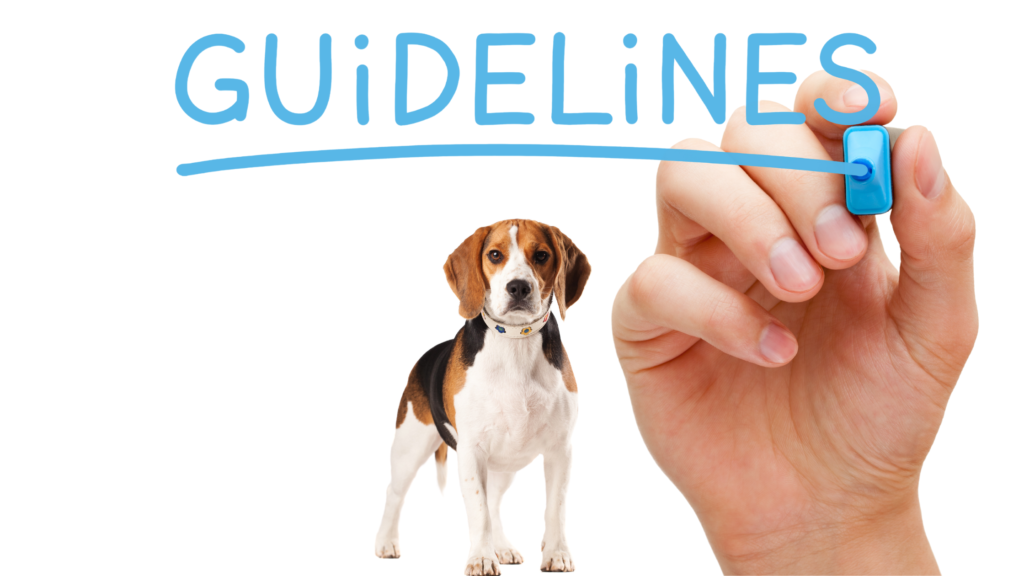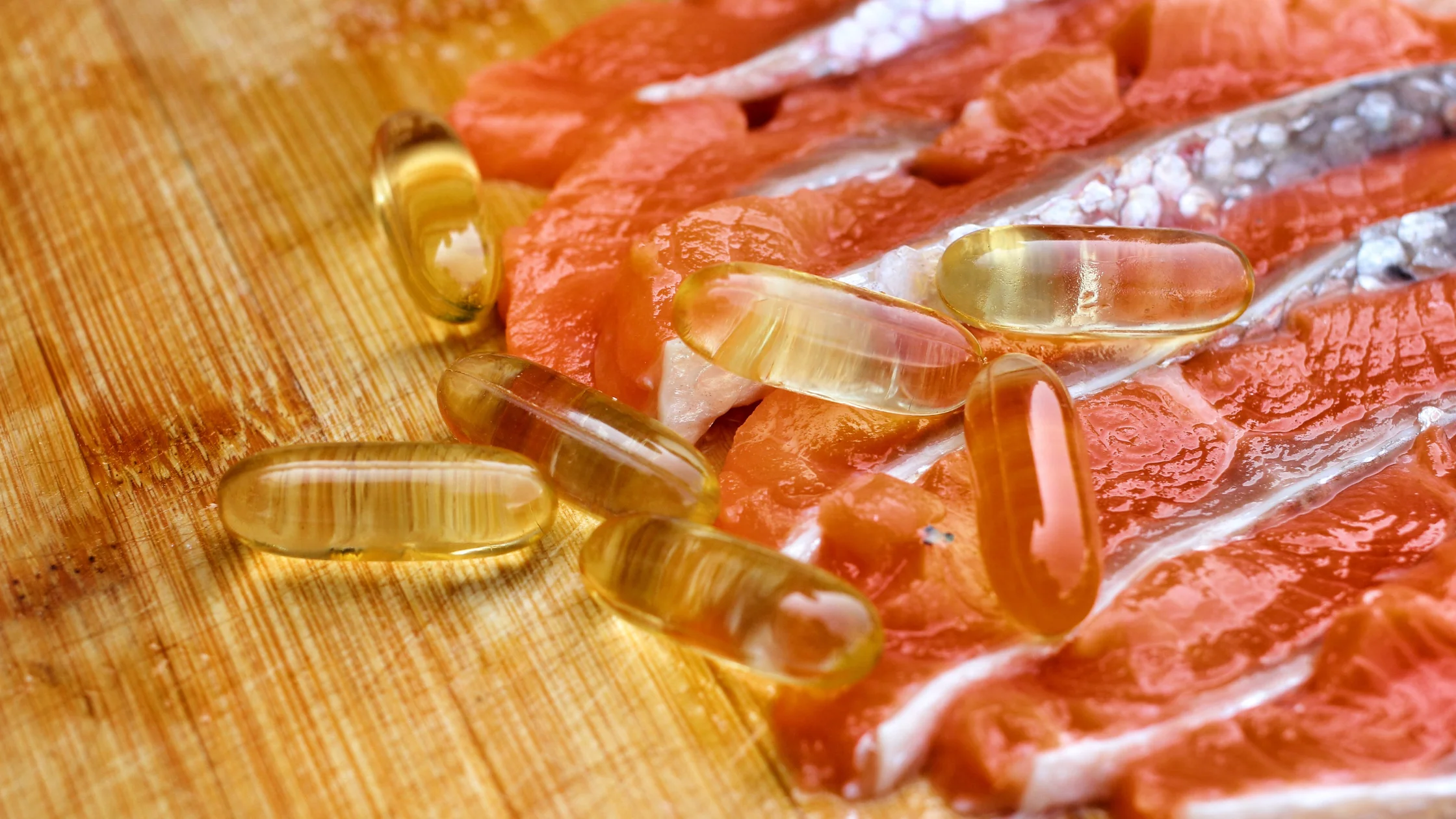If you’re looking for a natural way to boost your dog’s health, consider adding salmon and pollock oil to their diet. These oils are packed with omega-3 fatty acids, which can provide a range of benefits for your furry friend. This comprehensive guide will explore everything you need to know about salmon and pollock oil for dogs, including the benefits, dosage guidelines, and more.
What are salmon and pollock oil?

Salmon and pollock oil are two fish oil types commonly used as supplements for dogs. These oils are rich in omega-3 fatty acids, which have a range of health benefits for dogs. Salmon oil is made from the fatty tissues of salmon. In contrast, pollock oil is made from the fatty tissues of pollock, a whitefish commonly found in the northern Pacific Ocean. Both types of oil are often used interchangeably as sources of omega-3s for dogs. Still, there are some differences in their nutritional profiles and how they are sourced and processed.
Is salmon and pollock oil good for dogs?
Yes, salmon and pollock oil can be very beneficial for dogs. Both of these oils are rich in omega-3 fatty acids, essential for maintaining good health in dogs.
Omega-3s can help support a dog’s cognitive function, joint health, and immune system and improve their skin and coat.
In addition, salmon and pollock oil contain vitamin E, a powerful antioxidant that can help protect against free radical damage.
It’s important to note that not all salmon and pollock oils are created equal, and choosing a high-quality product that is free from contaminants and sustainably sourced is essential.
Additionally, following dosage guidelines and monitoring your dog for adverse reactions is necessary.
Suppose you have any concerns about giving your dog salmon or pollock oil. In that case, you should consult your veterinarian to determine if it’s appropriate for your dog’s needs.
Understanding the differences between salmon and pollock oil for dogs
Understanding the differences between salmon and pollock oil is essential when deciding which is best for your dog. While both oils are rich in omega-3 fatty acids, they differ in their nutritional profiles and in how they are sourced and processed.
The nutritional profile of salmon oil
Salmon oil is known for its high levels of EPA (eicosapentaenoic acid) and DHA (docosahexaenoic acid), two types of omega-3 fatty acids that are essential for dogs.
These fatty acids have been shown to have a range of health benefits, including reducing inflammation, improving cognitive function, and supporting heart health.
Salmon oil also contains vitamin D and astaxanthin, a powerful antioxidant that can help protect cells from damage.
The nutritional profile of pollock oil
Pollock oil is also high in EPA and DHA. However, it typically contains slightly lower levels of these fatty acids than salmon oil. However, pollock oil is a good source of vitamin E. This antioxidant can help support immune function and protect cells from damage.
Which oil is best for your dog?
Both salmon and pollock oil can be good sources of omega-3s for dogs, and the choice between the two may depend on a variety of factors, such as availability, cost, and personal preference.
Some dogs may also have specific health needs that may make one oil a better choice than the other.
It’s always a good idea to consult with your veterinarian before starting your dog on any new supplement, including salmon or pollock oil, to ensure it’s the right choice for your dog’s specific needs.
Also Read: Are Peonies Toxic to Dogs? What You Need to Know
The benefits of omega-3 fatty acids for dogs
The benefits of omega-3 fatty acids for dogs are numerous. Omega-3s are essential fatty acids that cannot be produced by the body and must be obtained through diet or supplements.
Omega-3s have been shown to have anti-inflammatory effects, which can help to reduce inflammation throughout the body, including in the joints.
This makes omega-3s popular for dogs with joint issues, such as arthritis. In addition, omega-3s have been linked to improved brain health and cognitive function in dogs and support a healthy immune system.
Common health issues that salmon and pollock oil can help with
Common health issues that salmon and pollock oil can help with include allergies, dry skin, and coat problems.
Omega-3s have anti-inflammatory effects that can help reduce itching and inflammation associated with allergies.
They can also help improve the skin and coat, making it healthier and shinier. Omega-3s have also been shown to benefit dogs with kidney and heart disease.
The impact of omega-3s on cognitive function and brain health
The impact of omega-3s on cognitive function and brain health is an essential consideration for dog owners.
Omega-3s are important for developing and maintaining the nervous system, and they can help improve memory, learning, and problem-solving skills in dogs.
Additionally, omega-3s have been shown to have protective effects on the brain, reducing the risk of age-related cognitive decline.
How omega-3s can support your dog’s immune system
Omega-3s can support your dog’s immune system by helping to reduce inflammation and boost the production of immune cells.
This can help to protect your dog against infections and other diseases. Omega-3s have also been shown to have anti-cancer effects, reducing the risk of some types of cancer in dogs.
The role of omega-3s in joint health and mobility
The role of omega-3s in joint health and mobility is another important consideration for dog owners.
Omega-3s have been shown to have anti-inflammatory effects that can help to reduce joint pain and stiffness, making it easier for dogs to move around and stay active.
This can benefit older dogs or dogs with arthritis or other common issues.
How salmon and pollock oil can improve your dog’s skin and coat
Omega-3s have been shown to help reduce dryness and itching associated with skin allergies and improve the overall health and shine of your dog’s coat.
Finally, salmon and pollock oil can improve your dog’s skin and coat. This can help your dog look and feel better and reduce the risk of skin infections and other issues.
Dosage guidelines for salmon and pollock oil for dogs

Dosage guidelines for salmon and pollock oil are essential when supplementing your dog’s diet with these oils. While both oils are generally considered safe for dogs, it’s vital to ensure that you give your dog the appropriate amount for its size, weight, and specific health needs.
How much salmon and pollock oil should you give your dog?
The recommended dosage for salmon and pollock oil will depend on your dog’s size, weight, and individual health needs. Generally, a good starting point is to give your dog about 1 teaspoon of oil per 10 pounds of body weight per day. However, it’s important to note that this is just a general guideline. You should consult your veterinarian before starting your dog on any new supplement.
Factors to consider when determining the proper dosage
Factors to consider when determining the correct dosage include your dog’s age, activity level, and overall health status. Dogs that are more active or have specific health issues may require higher doses of omega-3s than dogs that are less active or healthy. It’s also important to consider any other supplements or medications your dog may take. These can interact with omega-3s and affect the dosage requirements.
How often should you give your dog salmon or pollock oil?
The frequency of supplementation will depend on the specific product you’re using and your dog’s individual needs. Some products recommend daily supplementation, while others suggest less frequent use. It’s essential to follow the manufacturer’s instructions and consult with your veterinarian to determine the appropriate frequency of service for your dog.
In summary, when supplementing your dog’s diet with salmon or pollock oil, it’s essential to consider the appropriate dosage guidelines. Consult with your veterinarian to determine the right amount and frequency of use based on your dog’s needs and health status.
Other sources of omega-3 fatty acids for dogs
While salmon and pollock oil are excellent omega-3 fatty acids for dogs, other essential fatty acids can also benefit your furry friend.
Flaxseed oil is a plant-based source of omega-3s and can be a good alternative for dogs that are allergic to fish or have other dietary restrictions. However, it’s important to note that the type of omega-3s found in flaxseed oil (alpha-linolenic acid or ALA) is not as easily absorbed by dogs as the EPA and DHA found in fish-based sources.
Chia seeds are another plant-based source of omega-3s that can be added to your dog’s diet. These tiny seeds are high in fiber and also provide other nutrients like protein and calcium.
Fish meal is a dried and ground-up form of fish commonly used in pet food as a source of protein and omega-3s. However, it’s important to note that the quality and type of fish used in the meal can vary and may not always be a reliable source of omega-3s.
Fish-based dog food is another option for providing your dog with omega-3s. These dog foods typically contain fish as the primary protein source. They can provide a well-balanced diet with the essential fatty acids your dog needs.
In summary, while salmon and pollock oil are excellent sources of omega-3s for dogs, other options are available for dogs with dietary restrictions or preferences. Consult with your veterinarian to determine the best sources of omega-3s for your dog’s needs.
Tips for introducing salmon or pollock oil to your dog’s diet
Introducing salmon or pollock oil to your dog’s diet can significantly boost their omega-3 intake and support their overall health. However, it’s essential to present the oil gradually and correctly to ensure that your dog accepts it and doesn’t experience any digestive upset. Here are some tips for introducing salmon or pollock oil to your dog’s diet:
- Gradually increase the amount of oil: Start with a small amount (e.g., 1/4 teaspoon) and gradually increase the amount over several days to avoid any digestive upset.
- Mix the oil with your dog’s food: Mix it with your dog’s regular food to make it more palatable and easier to consume. This can also help mask any fishy taste or smell your dog may find unappealing.
- Choose a flavored oil that your dog will enjoy: Some salmon or pollock oils come in flavored varieties, such as salmon or beef, making them more appealing. Alternatively, add a small amount of low-sodium chicken or beef broth to the oil to enhance the flavor.
- Consider using a dropper or syringe: If your dog hesitates to eat the oil mixed with their food, you can try using a dropper or syringe to administer it directly into their mouth. This can be especially helpful for dogs that are picky eaters or have trouble consuming liquids.
Introducing salmon or pollock oil to your dog’s diet can significantly support their health. By following these tips, you can help ensure that your dog accepts the oil and benefits from its many nutritional properties.
Risks and side effects of giving your dog salmon or pollock oil
While salmon and pollock oil can offer numerous health benefits for dogs, there are also some potential risks and side effects to be aware of. Here are some potential risks and side effects of giving your dog salmon or pollock oil:
- Potential interactions with medications: Omega-3 fatty acids can have blood-thinning effects and may interact with certain medications, such as blood thinners. If your dog is taking medication, consult your veterinarian before adding salmon or pollock oil to their diet.
- Digestive issues: Some dogs may experience digestive problems, such as diarrhea or vomiting, when first introduced to salmon or pollock oil. To minimize the risk of digestive upset, gradually and in small amounts, introduce the oil and constantly monitor your dog for adverse reactions.
- Allergic reactions: While rare, some dogs may be allergic to salmon or pollock oil. Signs of an allergic reaction may include itching, hives, swelling, or difficulty breathing. If your dog shows any of these signs, discontinue the use of the oil and consult with your veterinarian.
In summary, while the risks and side effects of salmon and pollock oil for dogs are generally minimal, it’s essential to be aware of potential interactions with medications and the possibility of digestive issues or allergic reactions. Monitor your dog for any adverse reactions. Always consult your veterinarian before adding new supplements or dietary changes to your dog’s routine.
Choosing a high-quality salmon or pollock oil for your dog
When choosing a salmon or pollock oil for your dog, selecting a high-quality product that is safe, nutritious, and sustainably sourced is essential. Here are some tips for choosing a high-quality salmon or pollock oil for your dog:
- Choose a reputable brand: Look for a brand with a good reputation and positive reviews from other dog owners. Avoid products that have a lot of negative feedback or that are produced by companies with a history of poor quality control.
- Avoid oils treated with chemicals: Some oils may be treated with chemicals to increase their shelf life or improve their appearance. However, these chemicals can be harmful to your dog’s health. Look for oils free from additives or chemicals and processed using gentle, natural methods.
- Ensure that the oil is sourced from sustainable fisheries: It’s essential to choose a sustainably sourced product to minimize the impact on the environment and ensure that fish populations are not depleted. Look for products certified by organizations such as the Marine Stewardship Council (MSC) or the Aquaculture Stewardship Council (ASC), ensuring that the fish is sourced from sustainable fisheries.
- Check the nutritional profile: Look for salmon or pollock oil rich in omega-3 fatty acids, particularly EPA and DHA. The oil should also be high in protein and low in saturated fat. Some oils may also be fortified with additional vitamins and minerals to provide nutritional benefits.
In summary, choosing a high-quality salmon or pollock oil for your dog is essential in ensuring that they receive the maximum health benefits from this nutritious supplement. By selecting a reputable brand, avoiding fats treated with chemicals, and ensuring that the oil is sourced from sustainable fisheries, you can help support your dog’s overall health and well-being.
Also Read: Can Dogs Eat Lemon Pepper? Is lemon pepper safe for dogs?
Conclusion
Salmon and pollock oil can be a great addition to your dog’s diet, providing numerous health benefits that can help keep your furry friend happy and healthy. By following the guidelines outlined in this guide, you can ensure that your dog receives the optimal dosage of these beneficial oils and enjoys all their benefits. You can help your dog live a long, healthy, and happy life with some care and attention.
